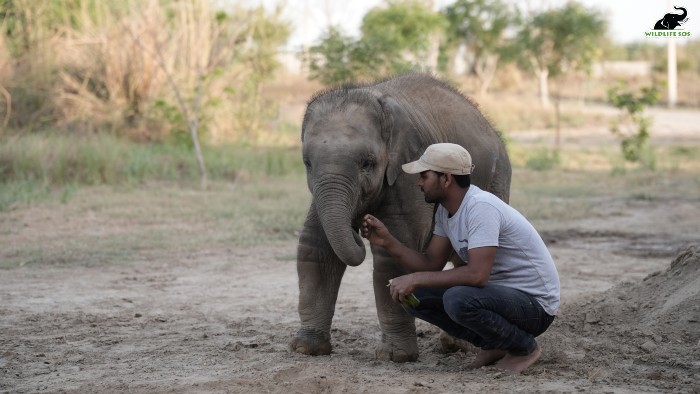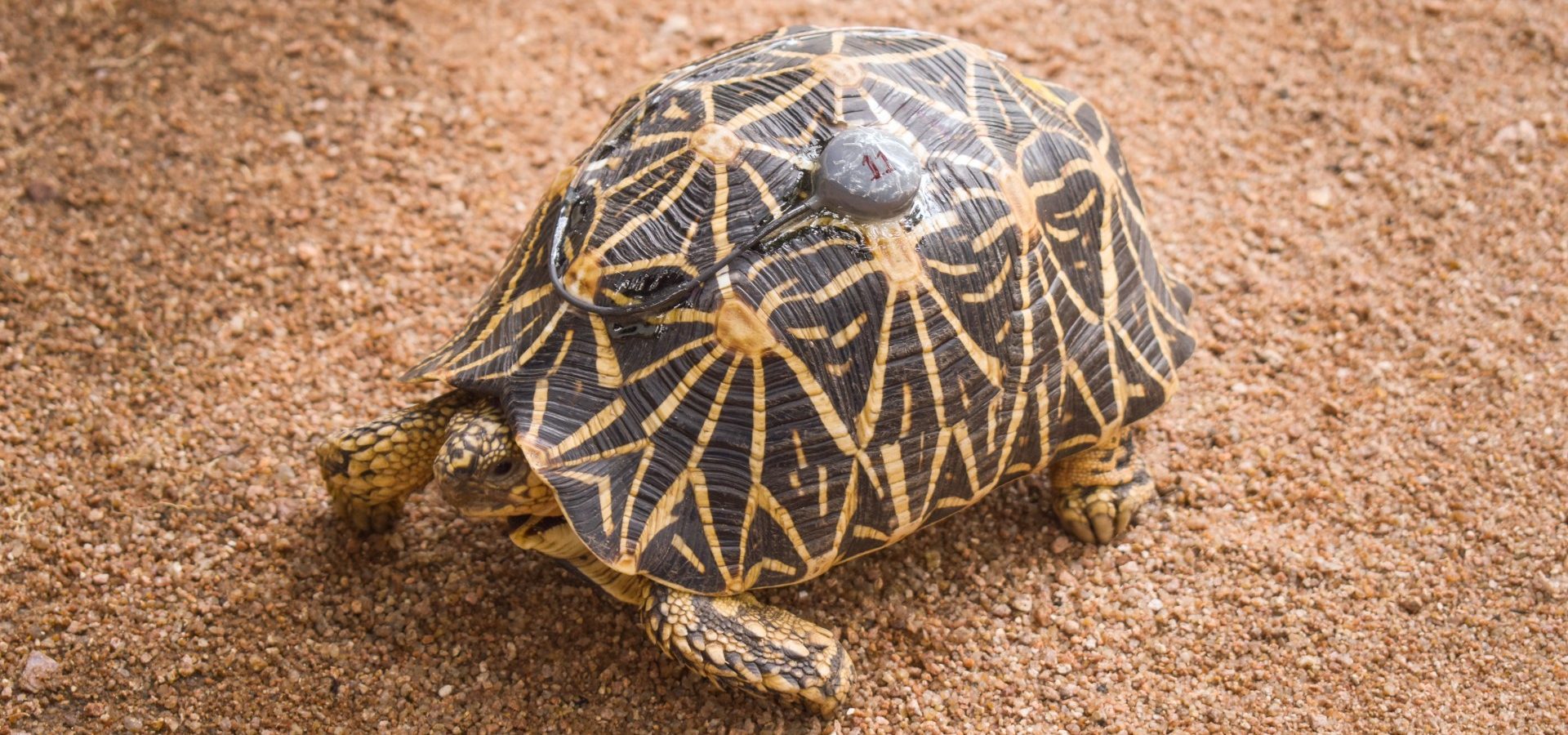Technology permeates every aspect of people’s lives, and as the world takes swift steps with technologically-aided services, wildlife conservation initiatives are employing these as well. Conservation technology aims to maximise the capacity of technology in management systems for different environmental and conservation projects — be it ex-situ research or in-situ operations.
Technology in Tracking
When it comes to conservation technology, radio telemetry in particular, has proved to be an efficient method to help us better understand animal behaviour. Radio telemetry is a technique used to track and monitor animals remotely. It is lauded for its ability to provide real-time data that has revolutionised many areas of study in conservation. As it works on the basic principle of sending a radio signal from a transmitter to a receiver, the three key elements of a radio telemetry system include a transmitter, a receiver, and an antenna. The transmitter can be attached or tagged to the subject using a collar, an ear tag, or a wing tag for birds in particular.

[Photo (c) Wildlife SOS/ Akash Dolas]
Over the years, advances in radio telemetry technology have enhanced its application in animal conservation and research. Reliance on VHF (Very High Frequency) transmitters requires manually tracking wildlife using handheld antennas. However, this labour-intensive process has been considerably alleviated by the integration of GPS (Global Positioning System) technology. Introduction of GPS provides automated tracking and precise location data that are transmitted via satellite or cellular networks, enabling remote monitoring.
Benefits of Tagging Wildlife
Radio telemetry has been impactful in studying wildlife for more than four decades in India. An important reason behind its widespread use is to mitigate the rising negative interactions between humans and wildlife in the country.

Deforestation has fragmented the natural habitats of wildlife, depleting their foraging environments. To procure essentials, animals venture into human settlements in search of food resources. In such situations, the use of radio telemetry is helpful in relaying the location and patterns of animal movement. They provide data that can optimise decision-making to control outbreaks of human-wildlife conflicts. In a bid to avoid untoward incidents, Early Warning Systems (EWS) can be established to alert local communities and ensure the safety of both humans and animals. Collection of the demographic census of wild animals and a deeper understanding of their range has been helpful in mitigating the rising human-wildlife conflicts.

Movement tracking helps trace migration patterns for wide-ranging animals and habitats, which can help to identify, create, and manage essential corridors and safe passages for wildlife. By considering their map, land use policies can be formulated sensitively keeping the interstate routes taken by wild animals.

Wildlife SOS has been actively employing advanced technology in diverse and strategic animal conservation projects.
Radio-Collaring Elephants
When it comes to elephants, radio-collaring is the most tried, tested and successful methodology used to study the movement and behaviour of these wide-ranging mammals. In fact, an Asiatic elephant was the first large animal in India to sport a radio collar for research in 1985 at Mudumalai Wildlife Sanctuary, Tamil Nadu.

Wildlife SOS has been actively involved in conflict mitigation. In collaboration with the state forest department of Tamil Nadu, our professional team carefully relocated a wild tusker that had been frequenting agricultural fields to feed on crops, causing panic among the villagers. The bull elephant was radio-collared before being moved to a forest reserve, allowing officials to monitor its movement and crop-raiding patterns to avoid future conflict scenarios.
In another instance, villagers in central Chattisgarh reported frequent sightings of elephants in their farms after 50 years of the mammal’s absence in the area. Agricultural fields and a growing human population had encroached the dense forest, prompting the herd to feed on crops to satiate their dietary needs. This was causing damage to fields and fear among villagers. To mitigate human-elephant conflicts, the matriarch of her herd, Van Devi, was fitted with a GPS collar, enabling the creation of an Early Warning System (EWS) to alert locals about the herd’s proximity. This technology-driven approach has proven effective in managing and reducing human-elephant conflicts.

Radio-Collaring Leopards
Leopard-human conflict is a common occurrence in Maharashtra, home to India’s third-largest leopard population. In a collaborative effort, the Maharashtra Forest Department, Wildlife SOS, and WCS-India took part in a radio-collaring project to study leopards in Mumbai’s Sanjay Gandhi National Park (SGNP). The aim was to understand the density of their population in the sanctuary, and their movement outside it to human-dominated areas. Knowledge of leopard behaviour and their ranges in SGNP can mitigate recurring conflicts between people and the leopards. The project involved using radio collars on two males and three males, and has revealed information about leopard habitat usage at SGNP. The study also shows that males have a much larger home range than the females do. The data collected aids conservation efforts within the unique, semi-urban environment of the park.

Repatriating Star Tortoises
Indian star tortoises find themselves heavily trafficked as their beautifully patterned shells make them desirable to be kept as pets. In a milestone operation, Wildlife SOS reintegrated 51 Indian star tortoises into their natural habitats, after they were seized from a smuggling racket in Singapore. The tortoises were rescued by authorities, following which Wildlife SOS collaborated with ACRES, a Singapore-based NGO, and the Karnataka Forest Department to bring the highly coveted species back to India. Before the tortoises were released into the Ramdurga Reserve Forest in the Koppal District of North Karnataka, VHF transmitters were safely attached to their shells. Radio telemetry helped significantly in the collection of data regarding their movements and in monitoring their overall health.

Tracking Sloth Bears
Wildlife SOS launched a comprehensive five-year project to study sloth bears, a species native to India that is least researched. This initiative involves fitting 10 sloth bears with GPS collars in Daroji and Gudekote Wildlife Sanctuaries in Karnataka. The project aims to address the human-bear conflict and conduct a large-scale habitat study of the species. By tracking real-time movements, habitat utilisation, demographic trends, and social behaviours, the project aims to gather crucial data for better conservation strategies and sustainable human-bear coexistence in the future.

Radio-Collaring Himalayan Brown Bears
A collaboration between Wildlife SOS and the Wildlife Protection Department of Jammu & Kashmir has opened the door for a research project to study Himalayan brown bears in Kashmir’s Sonmarg region. This project involved the first-ever use of radio-collaring for brown bears in India, and the aim was to address how unplanned disposal and treatment of waste impacted brown bear behaviour and ecology. To mitigate a habitual dependency on trash and to avoid conflict, it is imperative to study the availability and use of natural habitat for brown bears, along with their foraging behaviour, movement pattern, and hibernation period.

Tracking Levantine Vipers
Wildlife SOS frequently rescues Levantine vipers from unexpected locations in Srinagar. While the rescued snakes are released back into the wild after a thorough medical examination, it remains unclear how they adapt to new environments as these release sites may differ from their original habitats. To address this, Wildlife SOS has launched a one of a kind radio telemetry study to monitor the movement patterns and spots chosen as ideal residence by translocated Levantine vipers. Nine rescued snakes have been safely fitted with radio transmitters to disclose this information. This study also intends to compare the survival and ranging patterns of translocated snakes with those of non-translocated individuals, providing valuable data for conservation management within their habitat range. Through this research, Wildlife SOS seeks to optimise the relocation process, ensuring the welfare of both the relocated snakes and the existing wildlife populations in the study area.

Technology applied to the field of conservation has provided significant solutions that enable wildlife and humans to coexist in harmony. The use of radio telemetry has been of the utmost importance to record temporal and spatial movements of wildlife.
Join and support Wildlife SOS’s efforts in safeguarding animals and their habitats by supporting our cause here.





